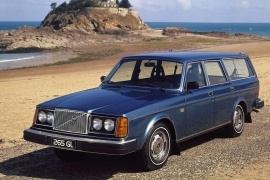VOLVO 265 Models/Series Timeline, Specifications & Photos
First production year: 1980
Engines: Gasoline
Body style: Wagon (station wagon, estate, combi, touring)
The Swedish carmaker was still independent and tried to make its way on the market with its boxy-looking vehicles. Moreover, it offered a station-wagon based on the 200 series.
The station-wagon was introduced on the market in 1975, but in 1980 it was refreshed. While it was difficult to refresh a brick-shaped vehicle and looks different than a brick, Volvo tried its luck and improved the car's interior and made subtle exterior modifications. On top of that, it introduced an inline-six diesel engine, which it bought from Volkswagen.
Even though the 265 looked like a five-year-old kid designed it, the station wagon was more elaborate, if some would look into some details. It was a car built to meet and exceed the most drastically crash-tests in the world, which it passed with flying colors. For the U.S. market, Volvo had to install dual headlights. Hence the North-American legislation stated that the passenger vehicles had to have round headlights with rubber sealing around the lenses. For the European model, Volvo used its rectangular units, with the turn-signals and the parking lights placed on the corners.
Inside, the carmaker installed a comfortable interior with enough legroom for all passengers. A folding bench was fitted as standard, and that could expand the trunk area. Moreover, due to the vertical sidewalls and the vertical tailgate, it was easier to load and unload bigger items.
In the late '70s, the second oil crisis started to bite from the car industry. Volvo cut a deal with Volkswagen to use their inline-six diesel engines. They were not the most powerful on the market, but they ensure a high fuel-efficiency, especially when it was paired to a manual transmission. For the gasoline version, the 265 featured a 2.8-liter six-mill unit.
